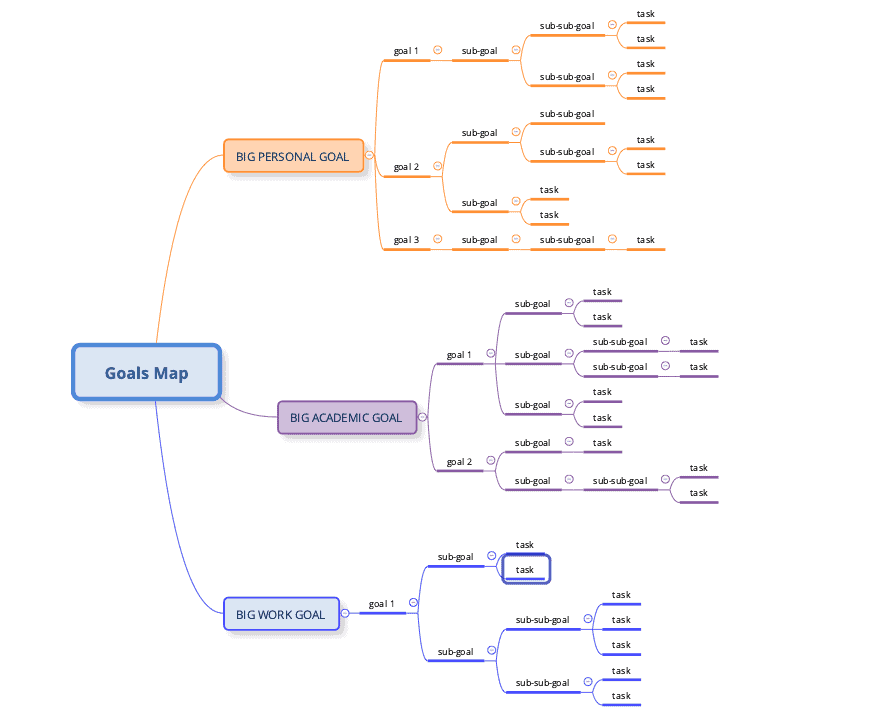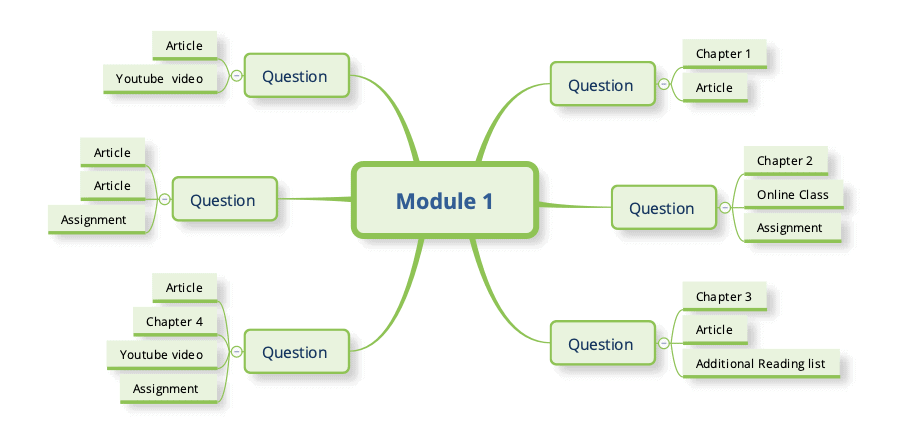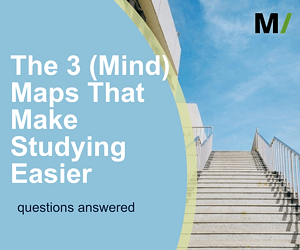I received an interesting question from a member of our community. The question was about how to use mind maps to take your studies to the next level.
I think there are three mind maps that you should use when studying. You want to learn new things.
You have books to go through. You have work and family that need your attention.
Studying should be made as simple as possible. These three mind maps will help you achieve that.
Let’s have a look at this, focusing on how mind maps can help you when studying.
The 3 mind maps every student needs
Mind mapping can help you with many aspects of studying. I use the following three maps to get the most out of my information and time.
a road map mind map
You have a calendar. You have to-do lists. You may even have a bucket list or goals list. These are powerful tools to get the most out of your time. They help you to know where you are and where you like to be.
What I suggest you create in a mind map is a combination of your study goals. The benefit of this is that you have an outline of your goals and milestones in one overview. You can see how everything is interconnected.
This is not only helpful for your day to day planning. It also helps you to stay motivated when things are difficult. After all, you only have to look at your map to see where you are and where you are going!
My road map mind map is a normal mind map with branches to both sides.
It shows me my goals on the first level of the mind map. Then I add sub-goals to the branches. These are needed to accomplish the level one goal. The next levels are showing sub-sub-goals and tasks.
At the most outside of the map, I have my daily tasks.

Once I find these, I create a small outline of my daily actions.
For example, when I study I have this daily actions list:
- create a mind map of 15 pages from my book
- read in more detail these 15 pages
- summarize in mind maps or simple notes
- create questions
- go over my questions and notes
- create a 300 words summary/article/audio
- go over previous notes to check where I stand
This schedule allows me to do this daily. It also helps me to accomplish the goals I set for myself.
The beauty is that I don’t have to worry about my goals this way. I simply do my daily actions and I move in the right direction.
This one mind map combines my goals and my daily actions.
What does your road map mind map look like?
a module mind map for each topic
I talked about this before. It is important to have one overview of your study information per topic. This means that you create a single map that shows you all the information from the book you are studying.
You can add more notes and thoughts to this map. The main point is that you have one map with access to all your information.
You can create this map by using the following first-level nodes:
- you can add the chapters of your book on the first level in your map
- put questions you have in the first level
- add book titles and video/audio material as main topics in your map

It is all up to you which outline you will use. It may also depend on the topic you are studying. When you have many articles, you can add them to the first level. A book might ask for a chapter outline.
Next, you go through your course content and you add this to your module mind map. The end result may be a very large map.
No problem!
Break up the map using the Divide and Conquer method from this article (What To Do With Too Many Details?)
Whatever happens, make sure you have one simple access point to all your material!
a Summap for the BIG picture
First, I was using mind maps for my notes. Then I thought about how in a mind map everything was connected. In real life, not everything is connected all the time. Connections and relations are fluid.
For instance, you are reading this article. An hour from now, mind mapping may not be on your mind anymore. This means mind mapping and you are no longer having a strong relationship then.
To do this in a mind map is not possible. Everything is connected.
The solution is simple. You remove the connecting lines and you end up with free-floating topics.
Creating overviews of information this way is very interesting. I wrote a book about this almost 15 years ago. It details how you can use this for your studies but also for outlining yourself and your life.
(When you are interested in this let me know)
Have a look at this yourself.
- Create a map that has you in the center
- Add the 10-15 most important influences in your life. Think about family members, work, co-workers, your study, friends, etc.
- Put all these influences around you.

It is important you put them where you feel they are right now. So probably most of your co-workers are near each other. When you are at home right now they might be a little bit further away than during the day.
This is your current overview.
Now take the same map (make a copy first), and move all the influences to the location where they should be. Think where you want them to make your life 10x better. What should happen? Do you need more or other influences?
Create a map with your ideal life or environment.
When you did that, you can start moving influences to their best location. Start for example with your present-day map. Move the influences in your real life to match the ideal life you outlined.
Again, if you like to learn more about this, let me know. There is much more to this than what we just discussed.
To Conclude
Life is moving fast. You should focus on the things you are doing. Don’t make too many mind maps. For studying, I suggest you create the maps we discussed above. They will help you understand where you are and what you should be doing. The result… you end up in the situation you wished for.
Of course, there will be distractions. Probably more than you want or even can take. Don’t worry. It is all about moving influences to the right location and taking care of your daily tasks!
I look forward to hearing from you about how your maps are working with and above all for you!



